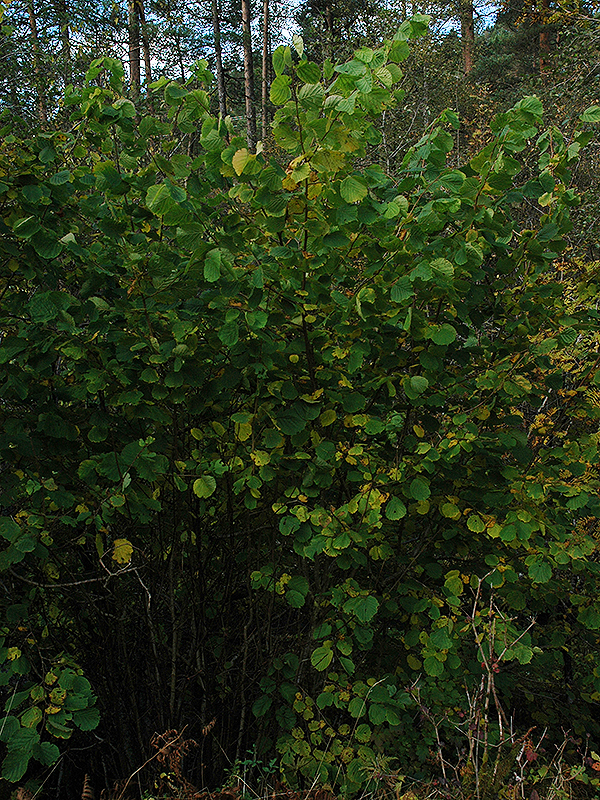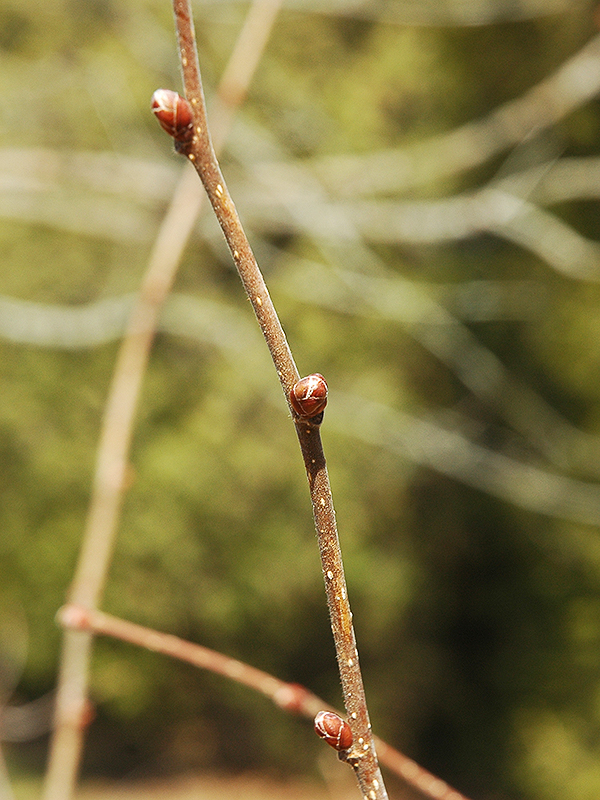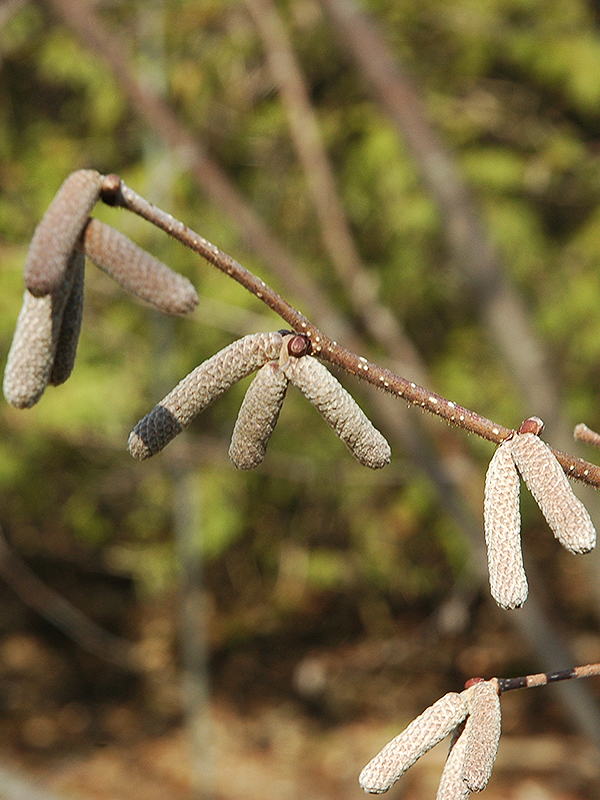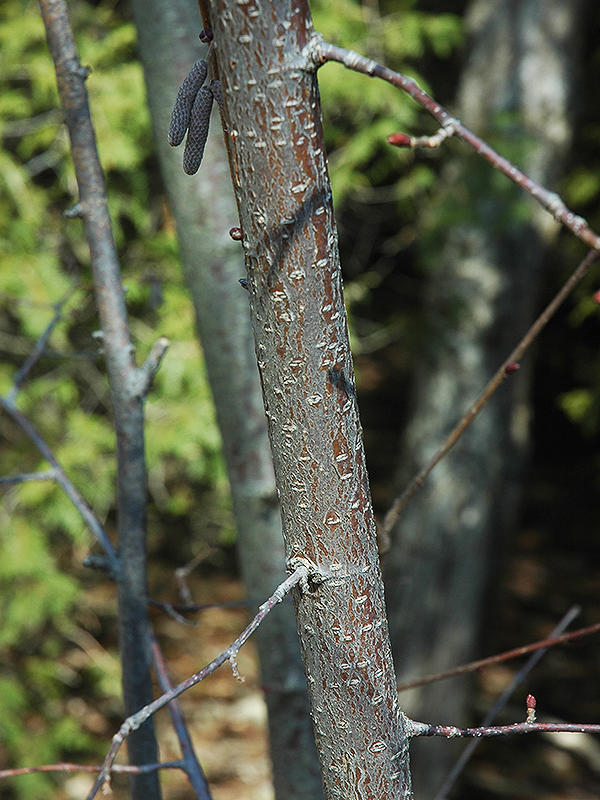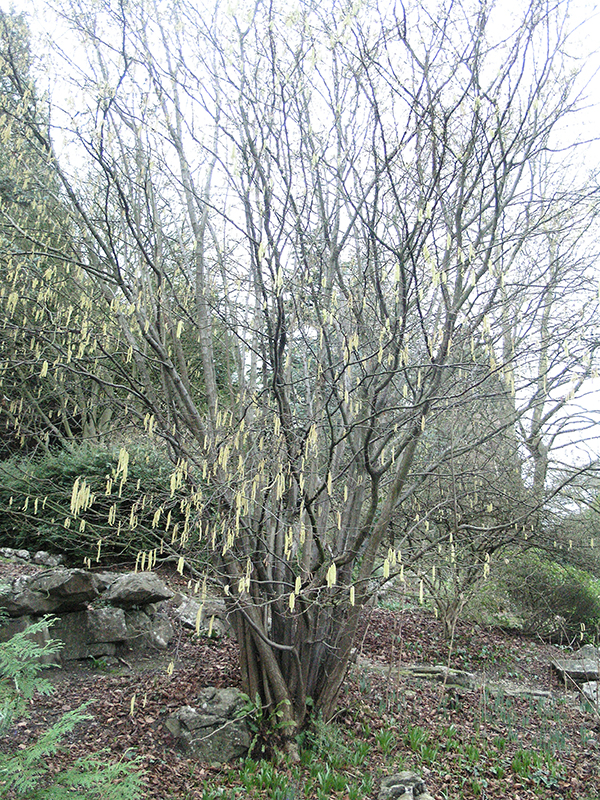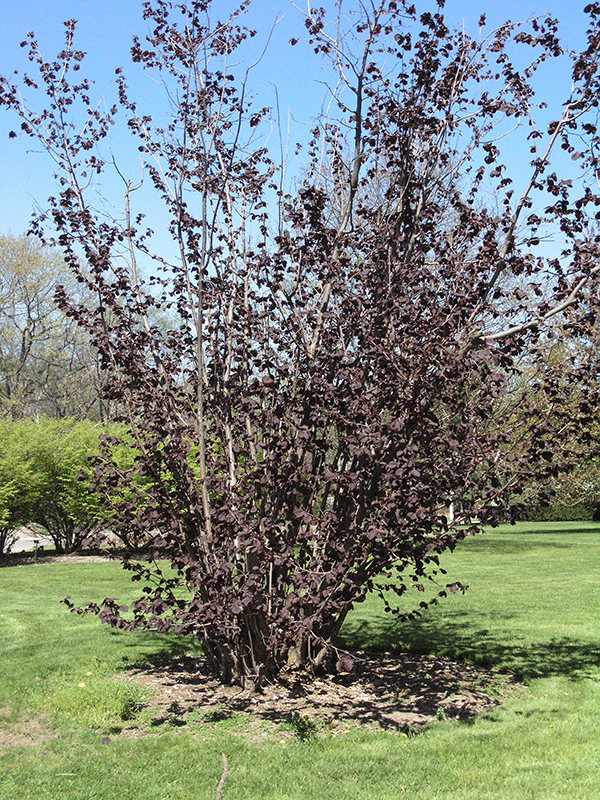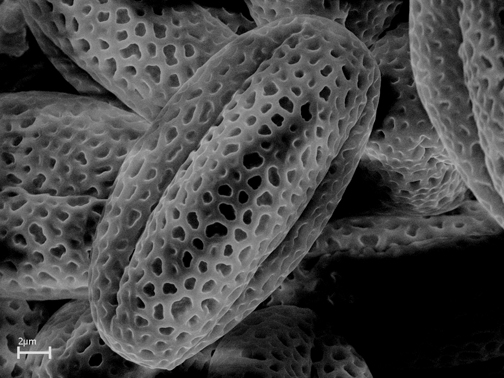| General Description | This species has been added to the IUCN Red List as least concern. |
| ID Characteristic | Large, rough, obovate leaves and when in fruit the nut partially covered by bracts. Branching is often thin, and frequently the plant is many branched originating from a central crown. |
| Shape | Unusually seen as a single stem, typically several stems giving a broad 'vase' shape to the form. |
| Landscape | Commonly grown for nut production with Turkey being the major producer, comprising 75% of the hazelnut market worldwide. The plant is still coppiced in parts of Europe where the long stems are often used in various agricultural/horticultural projects such as wattle fencing, hedge laying and other garden uses. It may be used as an informal, low windbreak/hedge and if coppiced provides an interesting contrast to traditional hedging/windbreaks.There are many 'nut' producing cultivars and several with interesting foliage and branching as as 'Atropurpurea' and 'Contorta'. |
| Propagation | Stored seed should be stratified for 3-4 months at 5°C and then germinated at 20°C, germination should occur in 4-6 months. Dry seed should be soaked 24 hours before sowing and scarification is advised. Fresh seed can be direct sown in a cold frame and should germinate the following spring. Layering has proven successful and division of shoots can provide large plants immediately. |
| Cultivation | Easy to grow if given alkaline to neutral soils that are well drained. It prefers moist soils and will tolerate the extremes once established. The life expectancy on an unpruned plant is about 70 years, however if coppiced it may live much longer. Even if the coppices are not harvested, I find the coppiced plant much more attractive in stature than the rather gangly form of a single stem tree. |
| Pests | Verticillium wilt may be a problem in some areas. If grown for its nuts squirrels may be a major pest. |
| Notable Specimens | The Niagara Parks Botanical Gardens and School of Horticulture, Niagara Falls, Ontario, Canada. |
| Habitat | Typically found as an understory plant in mixed forests of oak, ash and birch. It may also be found growing in mixed coniferous forests although it has little tolerance for acid soils. |
| Bark/Stem Description | Young twigs are covered in stiff long hairs while older bark is a grey-brown and smooth and shiny. As the bark ages it peels off in long thin strips and is often covered, especially in the moister extremes of distribution, with moses and lichens. |
| Flower/Leaf Bud Description | The smooth, plump, ovoid buds when immature are a green but as they age turn a pale brown. |
| Leaf Description | The alternate leaves, which emerge in early spring are obovate to about 10 cm across with an acute apice. The margins are doubly serrate or in some cases double toothed with the blade being slightly pillose, which gives them a slight rough texture. In the autumn the leaves turn a bright yellow, almost consistently across the entire plant and then gradually fall to the ground. |
| Flower Description | The male flowers are catkins while the females are small red tufts growing from what would appear to look like buds, originating from the same branches as the males. The catkins are up to 5 cm long and are light yellow in colour. Typically Corylus flower before the leaves emerge in early spring. C. avellana is self-incompatible and thus successful pollination only occurs between different trees. Pollination occurs by wind.
|
| Fruit Description | The nuts up to 2 cm in size are produced from the fertilised female flowers and are usually found in clusters of 2-3. They are partially enclosed by (involucre) bracts which when immature are a light lime green in colour but as the nuts ripen from September through October they turn a light brown colour. |
| Colour Description | The leaves are a dull mid-green, bark is light brown to grey and the nuts are lime green ripening to a light beige/brown. In autumn the leaves turn a medium yellow. |
| Texture Description | It is a coarse textured plant both in and out of leaf. |
